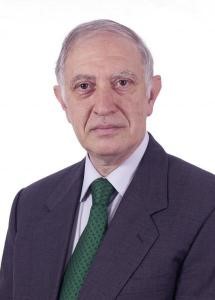Iachello Francesco

Iachello Francesco
Academic titles:
- professor emeritus
Membership in the Academy:
- corresponding member – Department of Mathematical, Physical and Chemical Sciences (1/30/1997 – …)
Curriculum Vitae
Francesco Iachello, was born on January 11, 1942, in Francoforte, Sicily, Italy.
Professor Iachello’s work has been dedicated to the study of symmetries in physics through the introduction of models based on symmetry and their application to physical systems.
In 1974, Professor Iachello introduced the interacting boson model of the nucleus. This model, developed in 1975-79 with Professor Akito Arima of the University of Tokyo, Japan, and based on the concept of dynamical symmetry, has brought order in the classification of complex nuclei and in the understanding of their properties. Together with Arima, Igal Talmi of the Weizmann Institute of Science in Rehovot, Israel, and Takaharu Otsuka of the University of Tokyo, Japan, he provided in 1977-78 a microscopic interpretation of the interacting boson model. The constituents of atomic nuclei, protons and neutrons, pair up to form proton pairs and neutrons pairs. These correlated pairs have integer angular momentum, behave like bosons and move together in a collective fashion.
In 1980, Professor Iachello introduced an additional ordering idea in the classification of spectra of nuclei, called dynamical supersymmetry. In some nuclei there are unpaired particles. These unpaired particles have half-integer values of the angular momentum, behave like fermions and move in a coordinate fashion with the bosons. Dynamical supersymmetries in nuclei are based on the interacting boson-fermion model of the nucleus, introduced by him in 1978 and developed with Olaf Scholten of the University of Groningen, The Netherlands in 1979-1981. Dynamical supersymmetries, developed with A. Baha Balantekin, Itzak Bars and Roelof Bijker in 1981-1983, brought order in the classification of nuclei with unpaired particles.
In 1981, Professor Iachello introduced the vibron model of molecules. This model, developed with Professor Raphael Levine of the Hebrew University, Jerusalem, in 1982-83, and also based on the concept of dynamical symmetry, provided a framework for the classification of molecules. Spectra of molecules are constructed with quanta of excitation called vibrons. In 1991-96, the vibron model was extended to the study of polyatomic molecules in collaboration with Stefano Oss of the University of Trento, Italy.
Current research interests: (i) Theory of quantum phase transitions (QPT) and excited state quantum phase transitions (ESQPT) in Bose- and mixed Bose-Fermi systems, with applications to nuclei and molecules. (ii) Theory of double beta decay with and without the emission of two neutrinos for the determination of the neutrino mass. (iii) Algebraic theory of clustering with applications to the alpha-clustering structure of light nuclei.
Since 1997 he has been a correspondent member of the Croatian Academy of Sciences and Arts.